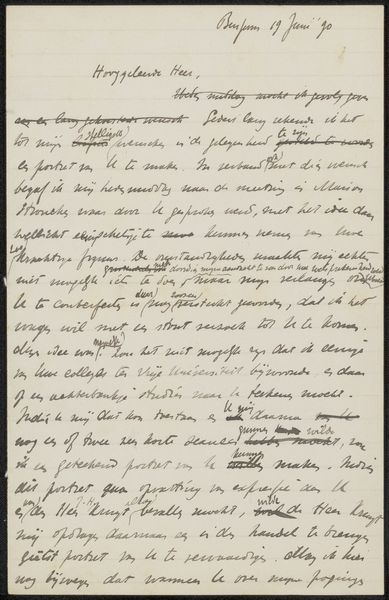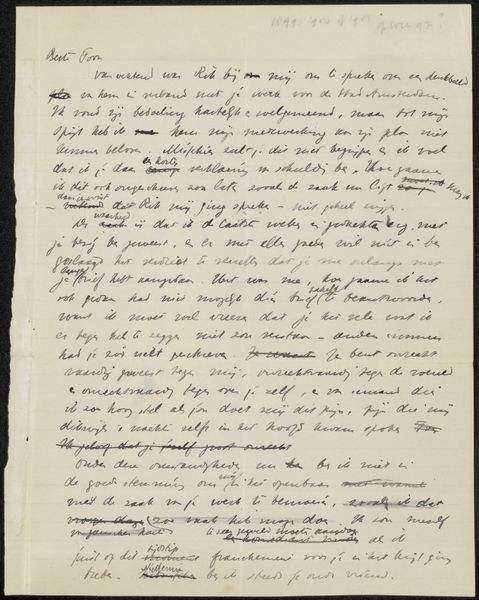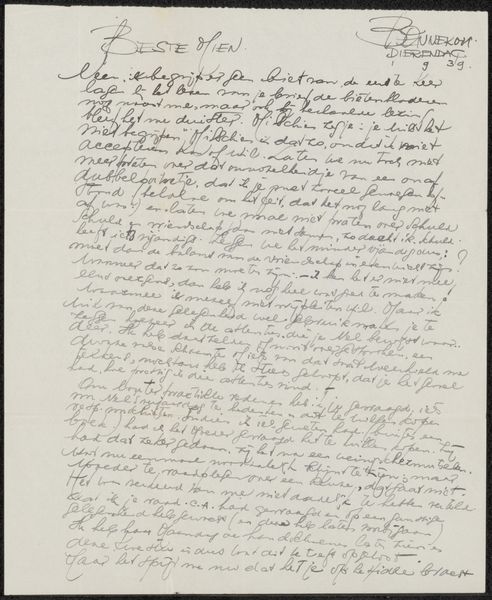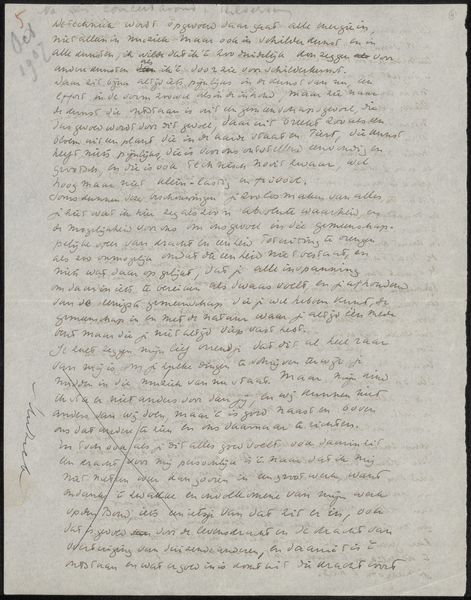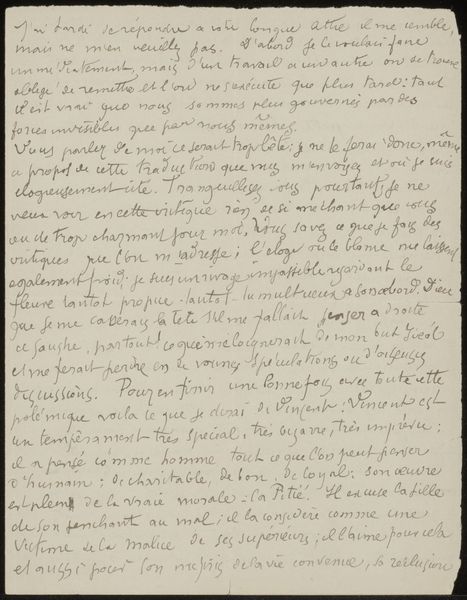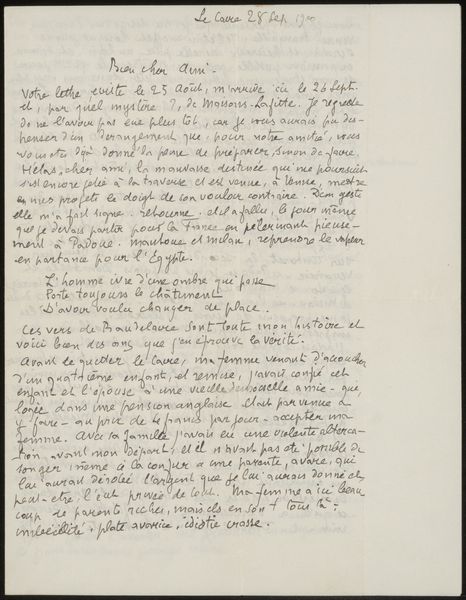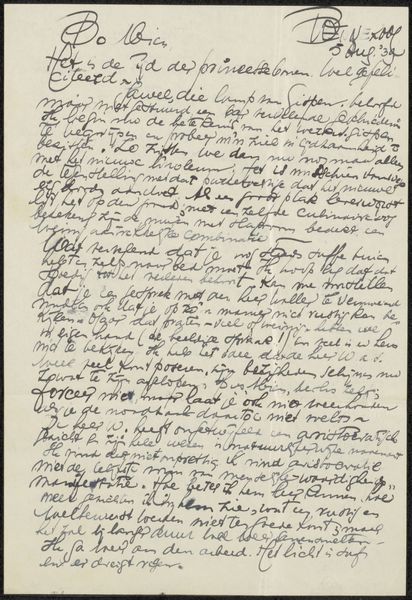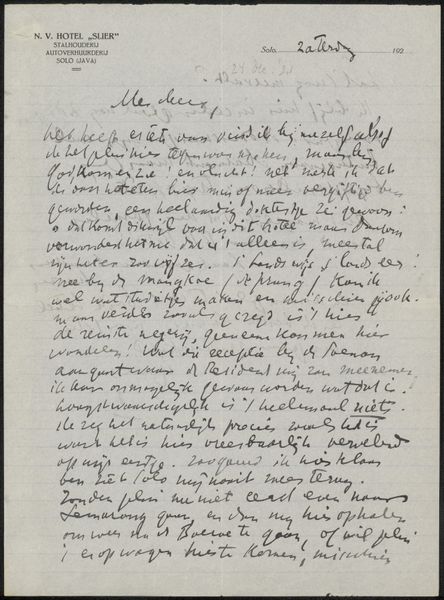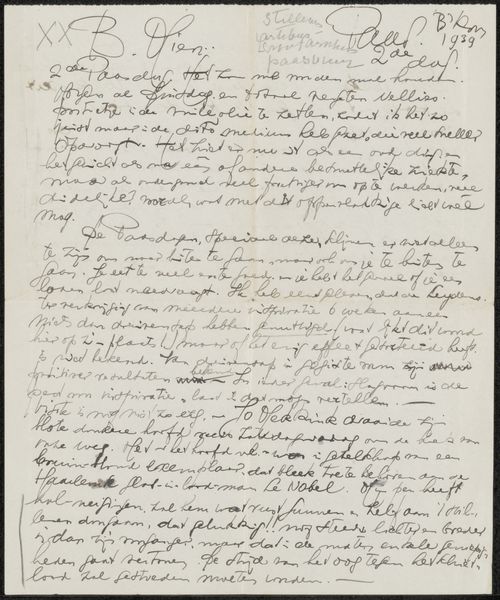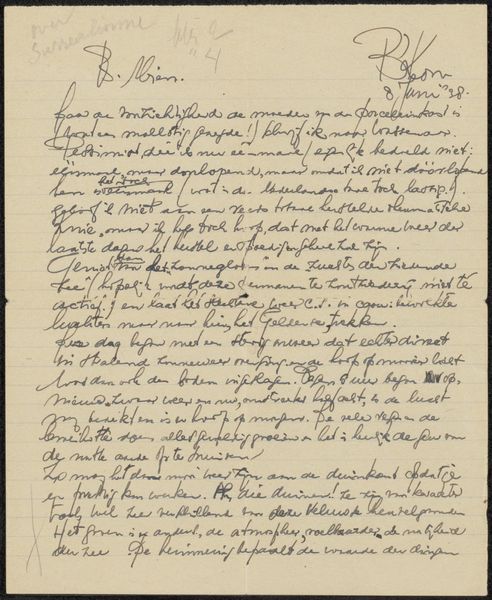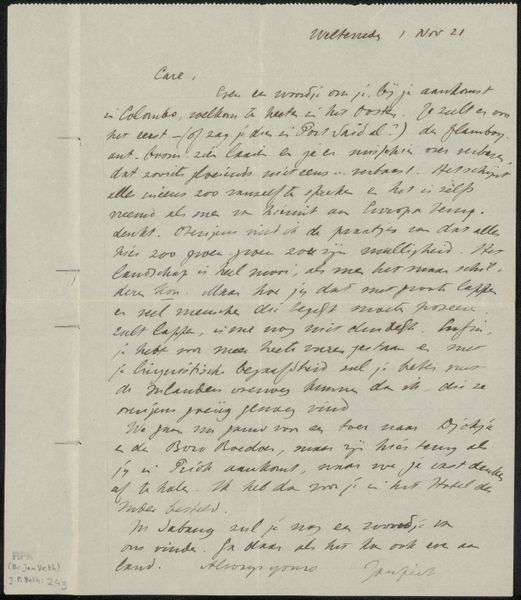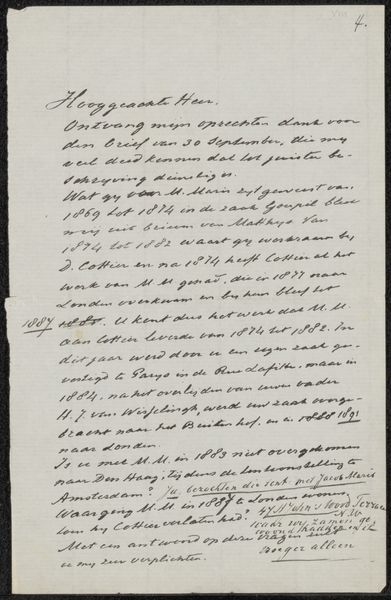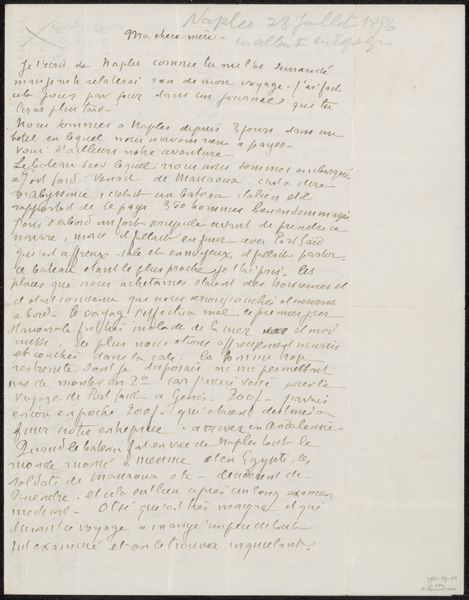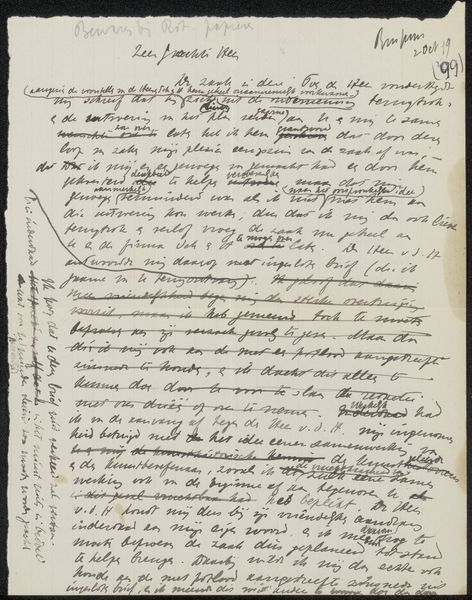
Copyright: Rijks Museum: Open Domain
Curator: Today we are considering a letter-drawing titled "Brief aan Héloïse Bernard-Bodin" from somewhere between 1878 and 1941, made by Emile Bernard with ink on paper. Editor: It gives an immediate impression of intimacy—fragmented thoughts hurriedly penned down. You can almost feel the weight of its unsent emotional discharge. Curator: Bernard's correspondence offers invaluable insight into the fin-de-siècle artistic circles and the complexities of his personal life. It illustrates themes prevalent in Post-Impressionism: a focus on subjective expression and, indeed, intimism. Editor: I agree. But who was Héloïse Bernard-Bodin? It's essential we consider the context around her in relationship to the artist. Was she a muse? Confidante? Why was this letter, so seemingly personal, preserved and now displayed? Curator: These are exactly the crucial questions a historical perspective invites. Héloïse was Emile Bernard's mother. Their relationship was complex, marked by intellectual exchange and emotional dependence. Bernard often sought her approval and validation throughout his career, and this letter likely reflects that dynamic. Editor: It resonates with many mother-son relationships in history that reflect social conventions but also artistic license. You can observe, in the artistic choices, both an attempt to conform and also the push against that period's mores. Curator: I'm glad you appreciate that delicate dance within this work. The hurried script, the lack of formal structure, could be interpreted as a sign of rebellion against academic norms but also as a glimpse into a vulnerable moment between son and mother. Editor: I am really touched by the rawness of what seems like unfiltered emotionality contained in this piece. When situated alongside contemporaneous female artists, does this piece invite or resist comparison? Curator: That's an insightful way to read it! While this letter gives the appearance of spontaneity, remember it's also a carefully constructed piece for an intended audience. His legacy, now enshrined, impacts its perception, something we must take into account as well. Editor: Right! These sorts of dialogues between private intention and public perception are indeed why contextualizing historical details around the artwork adds a special dimension to the museum-going experience.
Comments
No comments
Be the first to comment and join the conversation on the ultimate creative platform.
